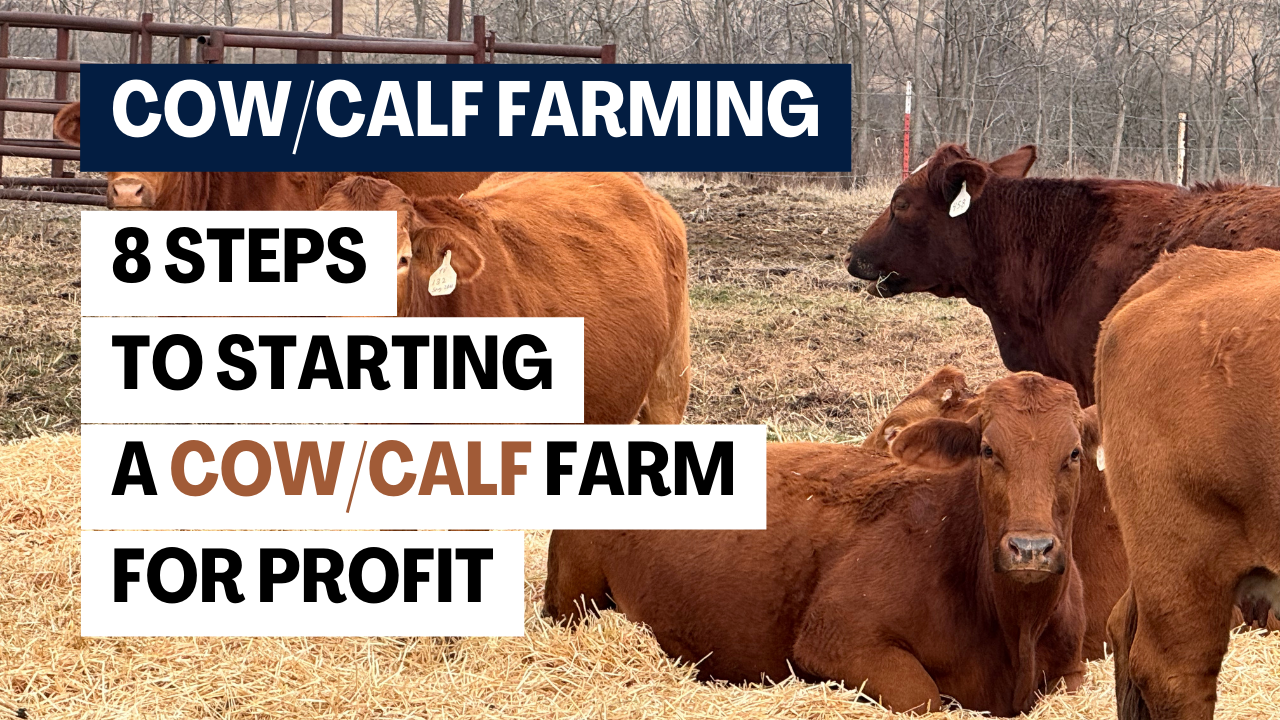From Pasture to Profit: A Beginner's Guide to Starting a Cow/Calf Farm
Thinking about diving into the world of cow/calf farming?
Know that this journey will bring you a mix of excitement, challenging times, and a little (sometimes a lot) of madness. Every decision counts, from picking the right breed to managing your pasture. But when done right and thoughtfully, it’s not only something you can do well, but can serve you and your family for generations.
Today, we want to take you through the process step-by-step to get your cow/calf farm started.
Step 1: Research and Planning
This type of farming is all about breeding cows to produce calves, which can be sold or retained. The goal is to maintain a productive herd that generates income and helps sustain the farm's operations. Understanding your market is crucial. Who will buy your calves? Are you focusing on weaned calves, feeder cattle, or retaining them for beef production? Understanding your market will guide many of your decisions, from breed selection to how you plan to let people know you have cattle for sale.
Step 2: Choose the Right Breed
You want a breed that will adapt well to your region’s climate and forage. For instance, Angus cattle are popular for their hardiness and quality meat, while Brahman cattle thrive in hotter climates. At Mayberry Farms, I chose Beefmaster cattle because they thrive in diverse environments and are resistant to heat, drought, insects, disease, and parasites. Plus, they're gentle giants—a big plus for my sanity. Ask yourself: What does the market demand in my area? Are buyers looking for high-quality beef or lean meat? These answers will guide your breed selection.
Step 3: Acquiring Land and Infrastructure
This could be the most crucial step. You'll need about 1.5 to 2 acres per cow/calf pair, depending on your region's fertility and forage quality. Once you have the land, plan your basic infrastructure, including fencing, a reliable water source, shelter, and handling facilities. Ensure that your fencing is secure (we’ve learned this the hard way!) and that water sources are accessible to all parts of the pasture.
Step 4: Health Management
Keeping your cows alive and healthy is paramount. Establish a good relationship with a local veterinarian for regular health checks and vaccinations. Proper nutrition is crucial, especially for breeding cows and growing calves. Nutrient needs vary by stage of production, so tailor your feeding program accordingly. Think of it as fine dining for your herd—because happy cows make happy farmers.
Step 5: Breeding Program
Having a breeding strategy is vital. Decide whether to use natural breeding or artificial insemination (AI - ChatGPT not required). AI can offer genetics from top bulls without the cost of keeping one however, it does requires more management and expertise. Maintain accurate records of breeding dates, birthdates, health interventions, and growth rates to make informed management decisions.
Step 6: Financial Planning
Plan your dollars carefully. Know what you have to spend, where to allocate resources, and your break-even point. Outline all potential costs. Things you’ll want to consider are things like: initial livestock purchases, feed, vet expenses, and labor. Also, don't forget to factor in unexpected events and emergencies—because they will happen. Explore funding options like loans, grants, or leasing land to reduce initial upfront cash requirements. A good financial plan is crucial for sustainability.
Step 7: Marketing and Sales Strategy
Develop a marketing plan for your calves. Consider selling at auctions, directly to buyers, or through online platforms. Build relationships with other farmers, join local agriculture groups, and participate in community events to open doors to prospective buyers and valuable partnerships.
Step 8: Regulatory Compliance
Stay compliant with local, state, and federal regulations, including land use regulations, animal welfare standards, and environmental laws. Don’t forget to protect yourself and your investment with proper insurance.
If you’ve made it this far, you might just be crazy enough to start a cow/calf operation (I was a sponge for information when I was getting started, so I get being that kind of crazy). Starting a farm is a big commitment that requires a blend of hard work, strategic planning, and a deep understanding of animal husbandry. These are some of the most crucial steps that you can take for a productive and profitable operation.
Remember, every farm is unique, and flexibility is key to adapting to the challenges and opportunities that come your way.
Ready to start your farming adventure? You’ve got this! Have questions? Reach out to me on Instagram and shoot me a DM. Always happy to help a fellow farmer :)

